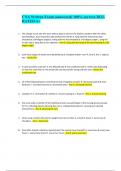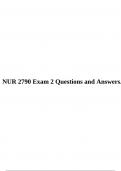Other
IB Biology HL Unit 1 (1.6 Cell Division)
- Course
- Institution
- Book
Unit 1 notes for IB Biology HL students. I took my exams in July 2022 and got a 7 in Biology HL. The notes are a combination of information from different sources with a main focus on the IB Biology Textbook.
[Show more]













